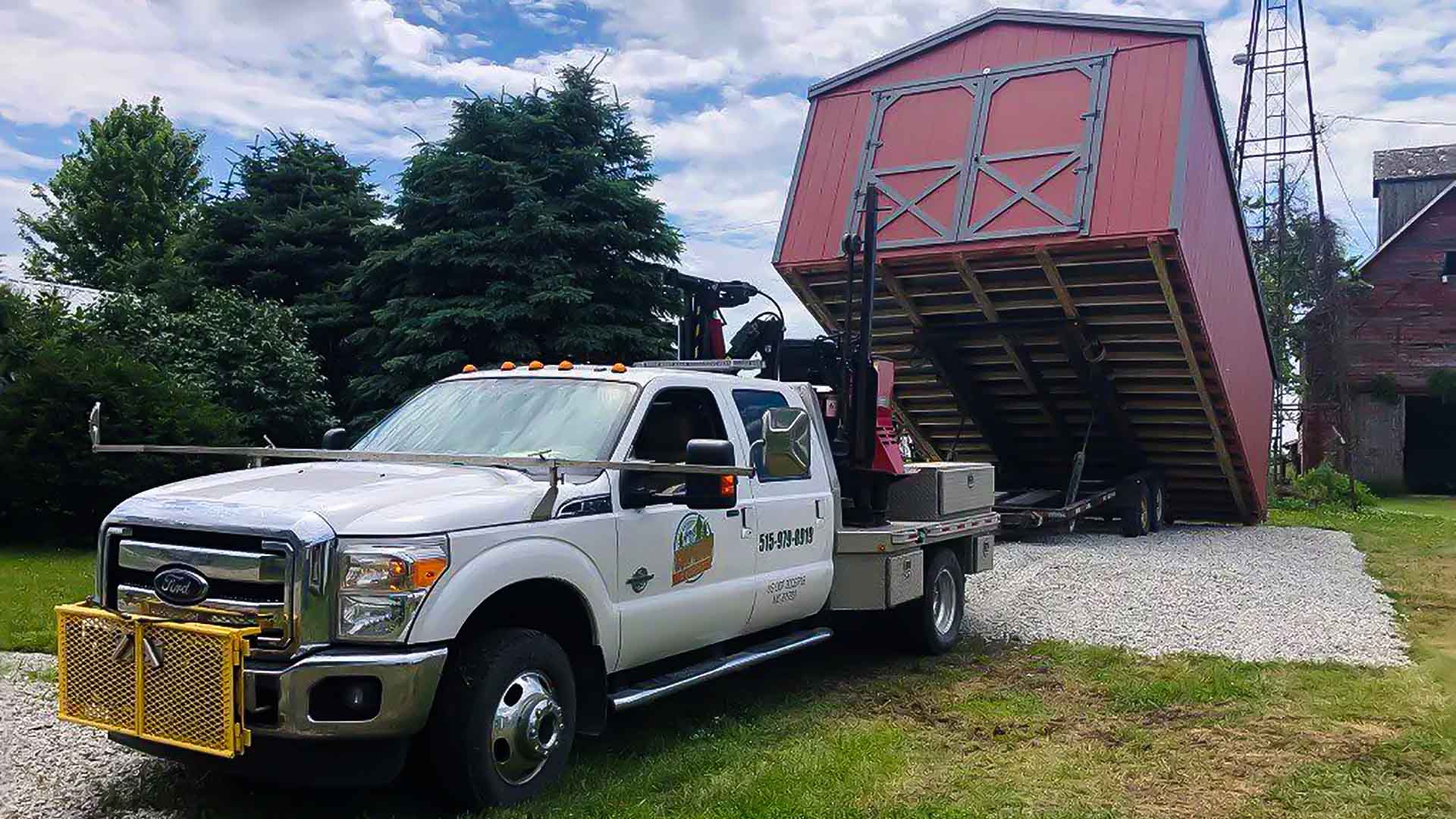
10 Questions For Deciding The Best Shed Placement On Your Property
October 31, 2019
1. What "Setback" Do You Need to Consider?
The term "setback" may be new to you if you have never built anything on your property before. A required setback is a measurement of space between your property line and where you can officially begin to build a structure on your property. These measurements are determined by municipalities and will require you to find some information before you start your shed project. First, you will need to know precisely where your property lines are. You should be able to find this information on your deed. Next, you'll need to know what the required setbacks are for your property, and if they vary anywhere. Your city or municipality should have that information online, but you can also give them a call to be sure.
2. What Kind of Accessibility Do You Need?
If you plan to have a pre-built, custom shed delivered to your home, consider how accessible your property and shed location will be. Work with an experienced company that can help you figure out the best way to access your property to deliver your new storage building. Even if you plan to build the shed yourself, you still need sufficient accessibility to get the materials onto your property. Make sure to ask the company who will be delivering the materials what kind of accessibility and space they will need.
3. What Is the Water Management On Your Property Like?
If you know you have an area in your backyard that constantly floods, that's obviously not the best place for your shed. Your shed placement should also exclude areas such as the bottom of a hill or any place where water pools to minimize unnecessary water damage. Make sure you have proper drainage in the area where your shed will be. Pooling water can cause wood to rot and will increase the chances of metals rusting.
4. Do You Have Level Ground?
Level ground is your best bet for shed placement. It will ensure easier installation and less natural pressure that causes leaning over time. If your property is sloped, consider leveling out an area for the best shed placement. You may need to build a base or create a rise to level out an area for your shed.
5. What Kind of Soil Are You Working On?
Just like making sure you have a leveled location for your shed, you have to make sure the soil underneath won't cause any problems. Sandy soil can shift under pressure, while rockier terrain can cause upfront problems with leveling the ground. As with leveling your ground out, you can build a base for your shed in the case of uncooperative soil.
6. Do You Need to Run Utilities to the Shed?
Are you thinking about adding lighting to your shed, or want an outdoor power outlet? If you are looking to have utilities run to your shed, plan where they will go and how much extra money it may cost you. Depending on where you want to place your structure, you may run into problems getting utilities to your shed. You should also find out what's below your property before digging or placing your shed to prevent any future problems.
7. Can the Delivery People Get It There?
Depending on your area, how big your shed is, and where your property sits, you may have a hard time getting your shed where you want it. Some areas have local transportation restrictions on the size of buildings (your storage shed) that can be transported and may require you to get a special permit. If you are having a larger shed delivered, look into any local restrictions that may exist.
8. Does Your Township Have Any Restrictions?
Just like transportation restrictions, your township may have restrictions on the size of the outdoor structure you can have built on your property. They may also have limits on where you can place your shed, how you can have it delivered, and if it can sit near your fence if you have one.
9. Does Your HOA Have Special Requirements?
Similar to township restrictions, you may live in a neighborhood with HOA (homeowner's association) restrictions. Your HOA may require that your new storage shed only be in the back yard or that it cannot be above a certain height. Check with your HOA to see if they have any special requirements before you buy a new shed.
10. Are There Other Property Hazards to Watch For?
We talked about looking out for utility lines in question six, but you also have to be careful of other hidden or visible hazards. Do you have a septic line or tank in the area you're considering for your shed? Are there power lines that hang lower in a particular area of your backyard? Or do you have older trees that concern you directly next to where you might place the new shed? Look at all property hazards that could damage your storage shed, or that could be damaged by your structure later on.
Visit Our Showroom to Find the Right Shed for Your Needs
Sun Rise Sheds focuses on quality manufacturing and excellent customer service here in the local Des Moines, Iowa area. We have an experienced team at our outdoor showroom at 15406 240th Street, Redfield, Iowa, that will be happy to discuss your shed needs and to help you find the best shed placement for your property. Stop by today and see how one of our custom shed styles can work for you!
RECENT POSTS
Chicken Coops: Why now is the best time to purchase
Maximizing Comfort and Practicality: Insulating Your Storage Shed
Backyard Storage: The Benefits Of Having A Shed In Your Backyard
Finding The Perfect Fit: How To Choose The Right Size Dog House Styles For Your Pet
What Are Some Benefits Of A Backyard Playhouse For Your Kids?
Discover 5 Dog Kennel Safety Tips To Provide The Best Home For Your Pet!
What Do You Want To Look For In A Wooden Shed?
Mastering The Art Of Placing A Shed On A Slope
Stay Cool, Chickens: Creative Chicken Coop Shade Ideas To Beat the Heat
Some Excellent She Shed Ideas For Her Personal Getaway Space At Home
 Please wait
Please wait